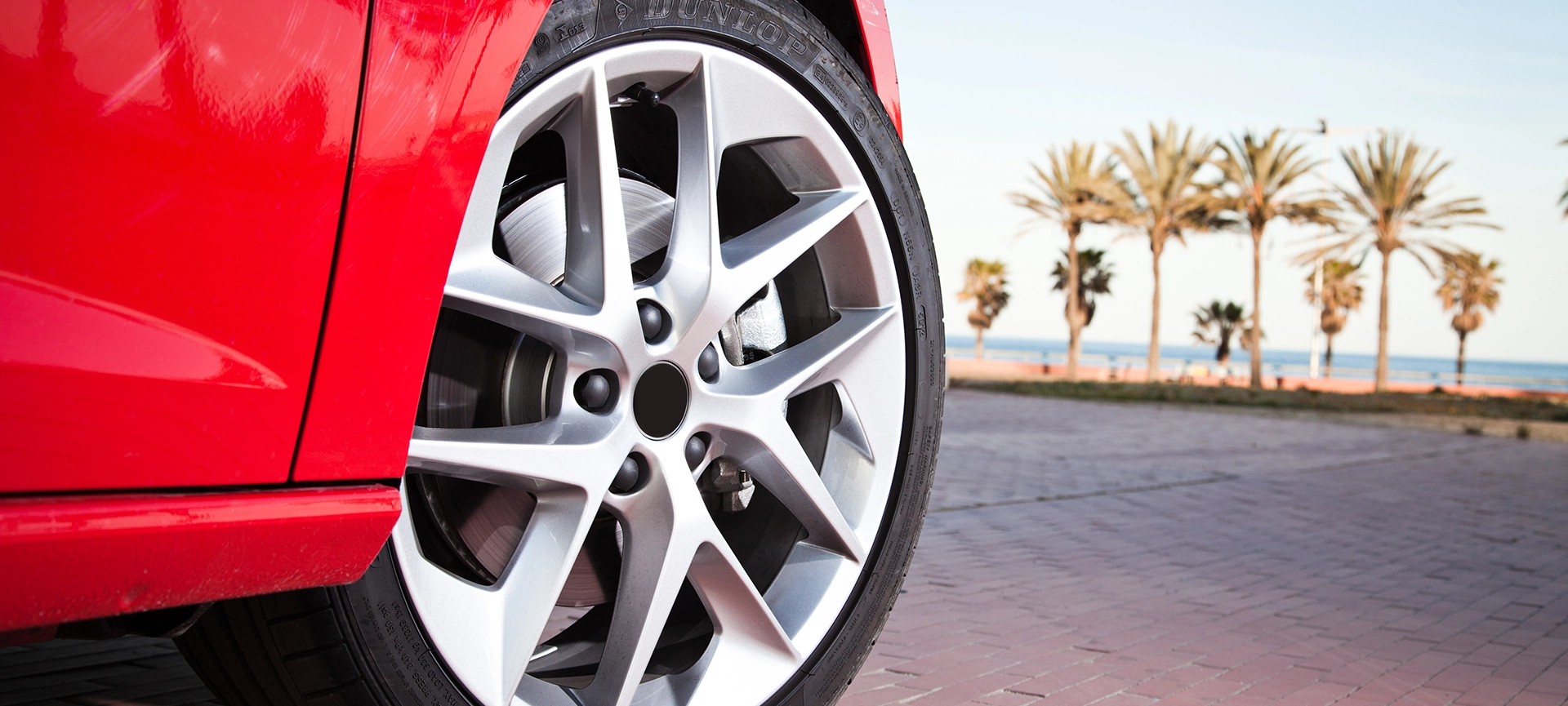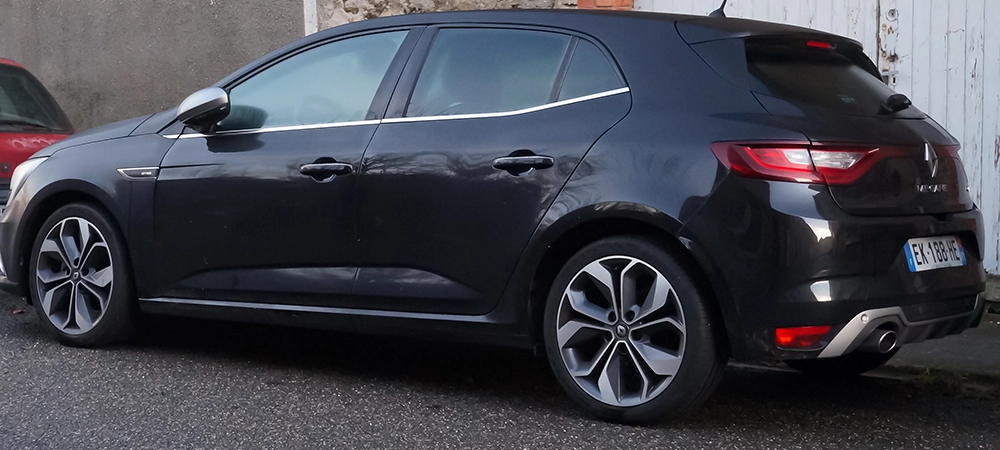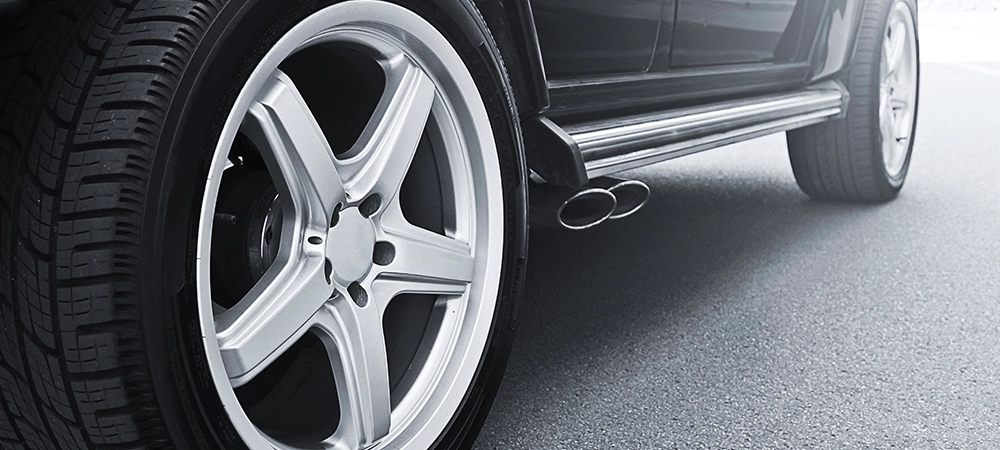Your vehicle’s wheels are crucial to its overall performance and handling characteristics. Among the factors that can significantly influence these aspects, your rim size is paramount.
Choosing the right rim size can profoundly impact ride comfort, traction, cornering ability, braking performance, and the overall driving experience. This blog post will delve into the effects of different rim sizes on vehicle performance and handling.
Here we’ll help you understand the benefits and considerations associated with smaller and larger rims.
Effects of Larger Rims on Ride Comfort
One of the primary concerns when considering larger rims is the potential impact on ride comfort.
- Larger rims often accompany low-profile tires, which have shorter sidewalls.
- While larger rims provide a sportier and more aggressive appearance, they also result in a harsher ride.
- The reduced sidewall height leaves less room for the tire to absorb impacts from road imperfections, leading to increased vibrations and road noise transmission into the cabin.
However, it’s worth noting that advancements in tire technology and suspension systems have mitigated some of these issues. Manufacturers are now producing tires with improved sidewall construction and materials that help enhance ride comfort even with larger rims.
Additionally, some modern vehicles feature advanced adaptive suspension systems that can be adjusted to compensate for the stiffer ride associated with larger rims, further improving overall comfort.
Related Article: How To Choose The Right Rims For Your Car?
Benefits of Smaller Rims on Traction
While larger rims may compromise ride comfort, they can offer advantages in terms of traction. Larger rims allow for larger tire contact patches, increasing grip on the road surface.
This can be particularly beneficial in dry conditions and when accelerating or cornering aggressively. The larger contact patch enhances traction and provides a more connected and responsive feel between the vehicle and the road.
Here’s how it feels driving with smaller rims:
- Smaller rims with higher sidewalls tend to provide more flex in the tire, allowing it to conform better to uneven surfaces.
- This flexibility in smaller rims can improve traction in certain situations, such as when driving on rough or unpaved roads.
- Smaller rims with taller sidewalls offer a degree of cushioning, reducing the impact of potholes and road imperfections on the tire.
Cornering with Different Rim Sizes
Cornering ability is another crucial aspect affected by rim size. Larger rims with low-profile tires generally provide enhanced cornering performance.
The shorter sidewalls reduce tire flex and sidewall roll during hard cornering, resulting in improved stability and responsiveness. This allows your vehicle to maintain better traction and grip, minimizing the risk of tire sidewall collapse.
Conversely, smaller rims with taller sidewalls can offer a more forgiving and progressive feel when pushing the vehicle to its limits. The increased flex in the sidewalls allows your tires to absorb lateral forces more effectively, providing a smoother transition during cornering.
This can be particularly beneficial for drivers who want a comfortable and predictable driving experience over razor-sharp handling.
Braking Performance and Rim Size
The choice of rim size can also impact braking performance. Larger rims generally accommodate larger brake rotors, which provide improved stopping power due to increased surface area and better heat dissipation. The larger rotors and callipers can effectively dissipate the heat generated during braking, reducing the risk of brake fade and ensuring consistent braking performance.
Additionally, larger rims often allow for installing performance-oriented brake systems with multiple-piston callipers and larger brake pads. These enhancements further enhance your vehicle’s braking capabilities, allowing for shorter stopping distances and improved overall safety.
Choosing the Right Rim Size
When selecting the ideal rim size for your vehicle, it’s essential to consider your driving preferences and the specific characteristics you prioritize.
If ride comfort is your primary concern, opting for smaller rims with taller sidewalls can provide a smoother and more comfortable driving experience, especially on uneven or poorly maintained roads.
However, larger rims with lower-profile tires may be the better choice if you value improved handling, traction, and a sportier appearance. They can enhance cornering capabilities and improve overall grip, especially on well-maintained roads.
It’s important to strike a balance between aesthetics and functionality when choosing the right rim size. Larger rims can undoubtedly enhance the visual appeal of your vehicle, but it’s crucial to consider the potential trade-offs in terms of ride comfort and potential damage to the wheels and tires from potholes and curbs.
Related Article: From Stock To Style: Upgrading Your Car’s Rims And Wheels For Performance And Aesthetics
In Short
The size of the rims on your vehicle can significantly impact its performance and handling characteristics. While larger rims may compromise ride comfort, they offer improved traction, cornering ability, and braking performance.
Smaller rims, on the other hand, provide a more comfortable ride and better absorption of road imperfections. When choosing the right rim size, it’s essential to consider your driving preferences and prioritize the aspects that matter most to you.
And where you need expert help, Rim Perfection can step in. We offer decades of experience with rim replacement and custom wheels.
Contact us today to discuss your driving needs and the best rim size for your vehicle.




